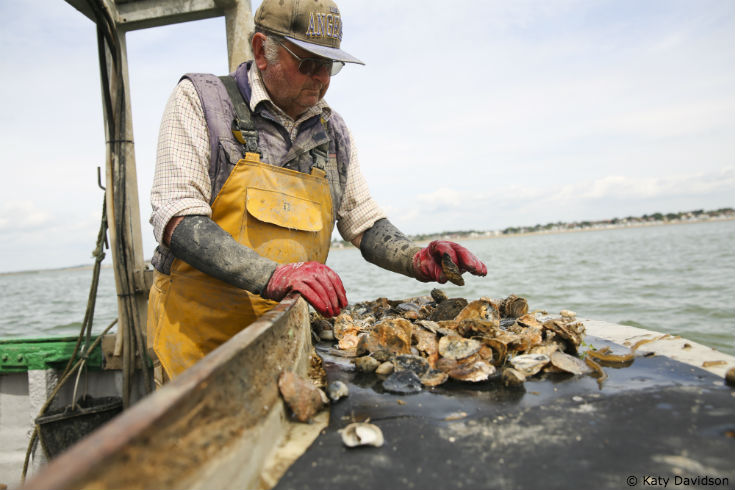Eight Generations
Published by Ocean Conservancy

Can you imagine a family in the same business for eight generations? Talk about dedication and deep expertise! That is what struck me when I met the Haward family, who has been farming oysters since the 1700s. Last month in West Mersea, England, I had the privilege of visiting Richard Haward’s Oysters. I was hosted by Richard himself, along with his son Bram. These men have inherited a craft honed by their great, great, great, great grandparents, but they are living in a time of unprecedented environmental change. And that is precisely why I was there, along with four American shellfish farmers. Specifically, we traveled to the United Kingdom to talk about ocean acidification and how it threatens the livelihoods and traditions of people who rely on the sea.
Earlier this week I wrote about the formal (and informal) discussions we had about ocean acidification with U.K. shellfish farmers, scientists and policymakers. We talked about its impacts on U.S. oyster and shellfish health and how we’ve started to address it on both sides of the Atlantic. We learned about the oyster farms, growing techniques, and water quality issues in the U.K.
Today, I’m writing about the people on the water whose lives would be directly affected by acidification.
I’m also showing more photos so you get a sense of Richard’s family, his business, the water where the oysters are harvested and of course, the oysters.
Here’s what we saw and learned:
Read the full article at: http://blog.oceanconservancy.org/2016/07/21/eight-generations/















